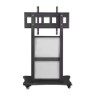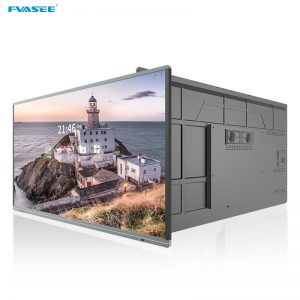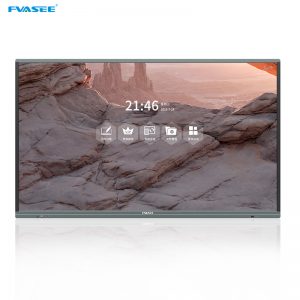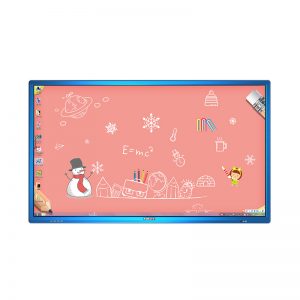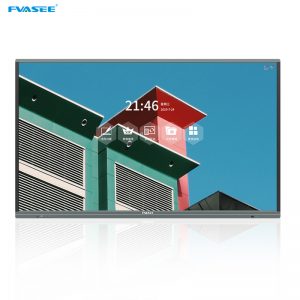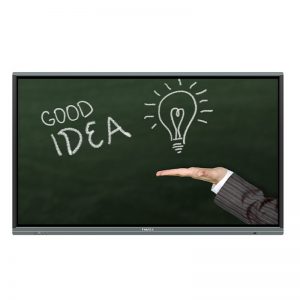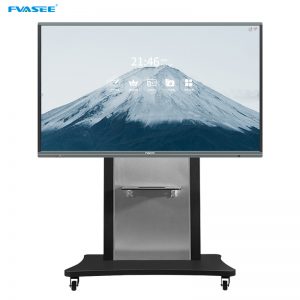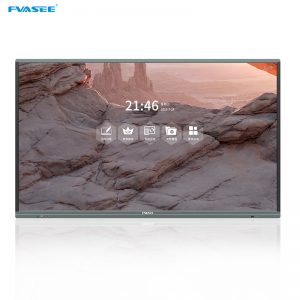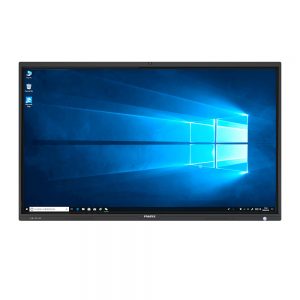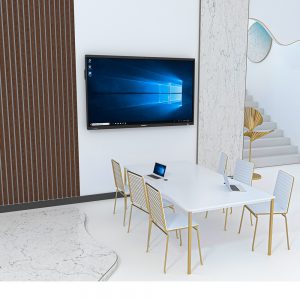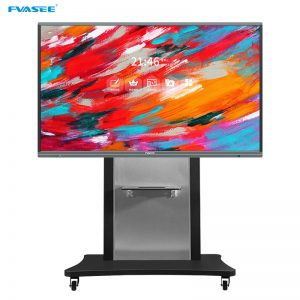Interactive Whiteboard
An interactive whiteboard (IWB) or Interactive Flat Panel Display , also known as a smartboard, is an interactive display in the format of a whiteboard that reacts to user input either directly or through other devices.
For a while, standard whiteboards have been used commonly as a way people can share messages, present information, and engage in collaborative brainstorming and idea development. With the same cooperative goals in mind, interactive whiteboards have the ability to connect to the Internet and instantly digitize tasks and operations.
Interactive whiteboards were invented to replace traditional chalkboards or whiteboards, which had to be wiped clean after every use. In order to use a blackboard or whiteboard, teachers used to need a constant supply of chalk or marker pens, whereas the interactive whiteboard doesn’t need any of these.
The technology behind interactive whiteboards varies between large format screens with a standalone system on a chip (SOC) and combinations of video projectors or smart projectors that use a tablet or other devices with drivers for user interaction. Forms of operation are often either by infrared or resistive touch, magnetic or ultrasonic pen. As writing and character recognition is generally digitized, keyboards can be almost completely unnecessary. Interactive whiteboard software often includes easy-to-use charts, polls and graphs, including virtual versions of tools one might find in a classroom like rulers compasses or protractors. They can play various types of media and provide teachers with interactive lessons for their students.
Interactive whiteboards are a billion dollar industry and are used in classrooms, boardrooms, engineering, coaching and the strategic planning of many types of projects. According to the Becta Harnessing Technology Schools Survey in 2007, 98% of British secondary schools and 100% of British primary schools had an interactive whiteboard in use.
Showing 1–12 of 26 results
What are the benefits of using an interactive whiteboard in the classroom?
The interactive whiteboard is an extremely useful tool in the classroom, helping to support learning in a variety of ways.
The interactive element of the whiteboard allows students to be more involved in the lesson – and it’s more engaging for the class. Students can interact with the whiteboard by choosing the correct answers, playing games or writing out spelling words and example sentences.
The interactive whiteboard also presents information to children in a way which is easy-to-read and exciting, helping students to retain information and make better notes. The ability to include images and videos on the screen provides children with a visual aid to stimulate their learning.
One of the clear benefits of interactive whiteboards in the primary classroom is that group activities that involve the interaction of the whole class can be done electronically with presentations prepared in advance, meaning teachers spend less time writing on the board and students have more time to learn.
Another benefit of using the interactive whiteboard is that you can encourage children to work together and centre lessons around problem-solving. You can write or type questions onto the screen for children to answer and get them working in small groups or as a whole class to find the answers.
What are the features of Interactive Whiteboard?
Interactive whiteboards resemble traditional dry-erase marker boards, but have the added functionality of touch recognition. Users can interact with computer programs, documents and images by touching the screen with a stylus or even with a finger. Benefits to those giving business presentations or academic lectures include advanced content interaction, increased audience engagement, sharing and storing of presentation events and interaction with networked computers and peripherals.
Content Interaction
The primary and most obvious feature of an interactive whiteboard is the ability to interact with projected content. Using included stylus pens, or your finger in some cases, you can draw lines, highlight text and interact with elements such as hyperlinks or buttons. This interactivity allows a presenter or a teacher to draw attention to specific parts of a lesson or presentation in real time.
Audience Engagement
The best way to keep the attention of an audience is to engage it, so avoid presenting static material in a lecture-style format. In a classroom setting, an interactive whiteboard can enable students to interact with content themselves, rather than passively reading lecture notes. As the teacher, you can invite students to the screen to draw or highlight elements of a presentation. Furthermore, the teacher or the student can launch applications from the whiteboard in order to bring together various multimedia technologies without having to sit behind a computer or podium. Students, particularly younger students, also enjoy the tactile sensation of engaging physically with the board, rather than absorbing information passively.
Saving and Printing
With interactive whiteboard technology, you can also save and print marks made by the whiteboard to your documents. For example, by using whiteboard software, you can save any annotations or writings you or your students made on projected documents, including highlights and drawings. It is a simple matter to share these annotations either by sending the file via email or printing a hard copy. This way, you can record the events of a presentation or lecture and disseminate them to those in attendance or to others who could not attend.
Peripheral Devices and Interconnectivity
You can also connect other technologies in order to interact with audiences, even with viewers who may not be present. By hooking up digital cameras to your computer, you can draw images from the device to mark and annotate images on a screen. Also, you can connect whiteboards to networked computers, so that viewers in one location can interact with a whiteboard connected to a computer in another location, offering document and image interaction at a distance.
